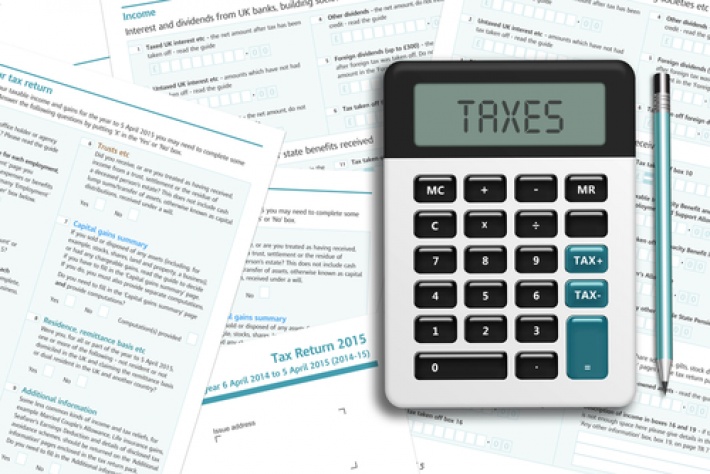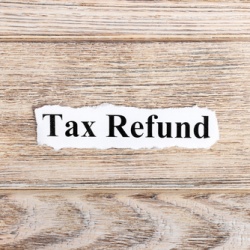Understanding HMRC: What is Payment On Account?

Payment on Account – the basics
Implemented as a way of helping the self-employed ease the burden of their annual tax bill by staggering payment throughout the year, Payment on Account can be cause for much confusion and frustration for those enrolled in the self assessment scheme.
Essentially Payment on Account are advance contributions towards your self assessment tax bill, with the idea being that you won’t be hit with a hefty payment you can’t manage further down the line. Instead you pay your bill in two instalments, one on 31st Jan (this is the same day as your ‘balancing payment’ which will be discussed later) and the other on 31st July. The amount due is calculated by looking at your previous year’s tax bill, and are worked out as half the previous year's tax and class 4 National Insurance liability. Any student loan repayments or Capital Gains Tax Class 2 National Insurance will not be included - you’ll pay those in your balancing payment instead.
Payment on Account is not optional; you will be automatically enrolled when you submit your self assessment tax return. The only exceptions to this is if your annual tax bill comes in at less than £1,000, or if in excess of 80% of the year’s tax was taken off at source, e.g. through Pay As You Earn (PAYE).
Your first year with Payment on Account
If you are preparing for your first year of Payment on Account, you should be aware of what to expect. If not, you may be in for a big shock the first time Payment On Account applies to you as HMRC will expect you to pay 150% of your tax bill at once. This is best illustrated with an example:
- You owe £6,000 on earnings between 6th April 2015 and 5th April 2016.
- This payment will need to have been made in full by midnight 31st January 2017. On top of this you will also need to pay an additional £3,000 at the same time. This is an advance payment towards your tax return the following January.
- This will then be followed by a further payment of £3,000 by midnight 31st July 2017.
- As a result, when it comes to filing your return for the following financial year, £6,000 will have already been paid towards it.
- If for any reason you have overpaid (such as your earnings were lower than anticipated), then you’ll be given a rebate
- If your earnings were higher than expected and you’ve consequently not paid enough, then you must pay anything you owe by 31st January 2018. This is known as a balancing payment. Your Payment on Account amount will be amended to reflect your increased tax liability.
- If your earnings remain the same, you’ll maintain the payments of £3,000 every January and July.
This is one of the reasons why it is always advisable to submit your tax return as early as possible. With more time to get the money together, hopefully the more likely it is that you will be able to meet the payment. This is particularly pertinent in your first year when you may be faced with a higher than usual bill due to Payment on Account.
Fluctuating Incomes
Due to the nature of business, you may find that your income can fluctuate from year to year. This is where problems can arise when it comes to Payment on Account.
If your profits suffer a fall, and your Payment On Account is higher than your tax bill will be, you can ask HMRC to reduce your payments to bring it in line with what you will actually owe. This can be done by way of form SA303, which lets you state that your tax liabilities are down. If you have already paid more than what you owe, HMRC will simply refund you this amount.
You should only do this however if you are sure your profits are down, or there is another legitimate reason why your tax bill is going to fall. You should not apply to reduce your Payment on Account simply because you cannot afford to pay what is due. If you reduce your Payment on Account by too much, HMRC will charge you interest on the shortfall and apply further penalties for underpaying your tax which will only make the situation worse.
The balancing payment
If however your income fluctuates the other way, meaning your tax liability is more than was previously estimated, you will be required to make a ‘balancing payment’ to bring your account up to date. This will be due by midnight on 31st January next year.
To illustrate this situation, let’s again imagine your annual tax bill for 2015/16 was anticipated to be £6,000 (based on your 2014/15 tax liability). Once you have made both Payment on Account payments, you will have paid a total of £6,000 by 31st July. However, when you actually submit your tax return, you discover that the total tax you owe for the 2015/16 tax year is considerably higher at £10,000.
You will then have an outstanding balance of £4,000 which you will need to pay by 31st January 2017. This is known as a balancing payment.
Therefore your 2017 payments would work as follows:
A total tax payment of £9,000 on 31st January 2017 made up of:
- £4,000 balancing payment for your 2015/16 tax bill
- £5,000 for the first Payment on Account contribution for 2016/17 (worked out as 50% of your 2015/16 tax bill of £10,000)
There will then be another £5,000 instalment due on 31st July 2017 which will satisfy your 2016/17 tax bill.
As with all tax matters if you are confused about any aspect of the self assessment process you should enlist the help of an accountant. Handpicked Accountants can recommend a qualified and trusted accountant who can advise on all matters relating to self assessment. We only refer accountants with whom we have a long-standing working relationship, so you can be sure they are reliable and experienced.


